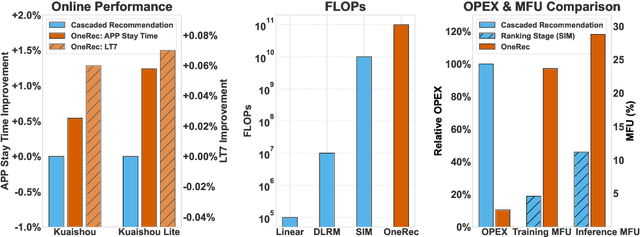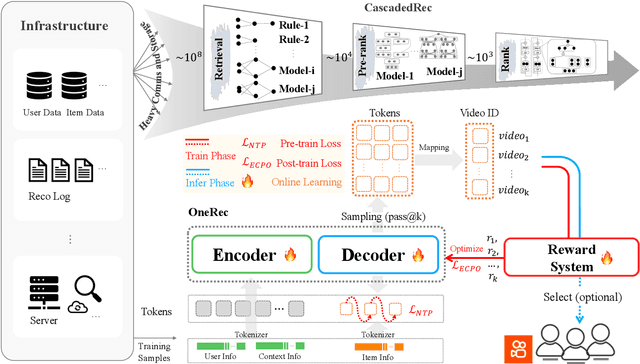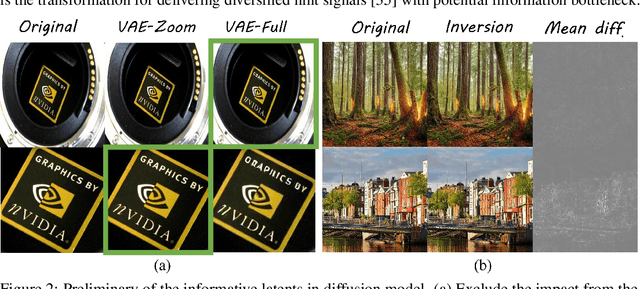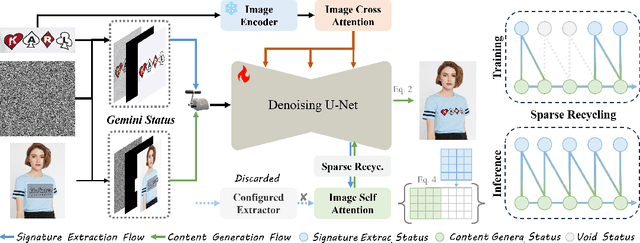Jinghao Zhang
CultureScope: A Dimensional Lens for Probing Cultural Understanding in LLMs
Sep 19, 2025Abstract:As large language models (LLMs) are increasingly deployed in diverse cultural environments, evaluating their cultural understanding capability has become essential for ensuring trustworthy and culturally aligned applications. However, most existing benchmarks lack comprehensiveness and are challenging to scale and adapt across different cultural contexts, because their frameworks often lack guidance from well-established cultural theories and tend to rely on expert-driven manual annotations. To address these issues, we propose CultureScope, the most comprehensive evaluation framework to date for assessing cultural understanding in LLMs. Inspired by the cultural iceberg theory, we design a novel dimensional schema for cultural knowledge classification, comprising 3 layers and 140 dimensions, which guides the automated construction of culture-specific knowledge bases and corresponding evaluation datasets for any given languages and cultures. Experimental results demonstrate that our method can effectively evaluate cultural understanding. They also reveal that existing large language models lack comprehensive cultural competence, and merely incorporating multilingual data does not necessarily enhance cultural understanding. All code and data files are available at https://github.com/HoganZinger/Culture
OneRec-V2 Technical Report
Aug 28, 2025Abstract:Recent breakthroughs in generative AI have transformed recommender systems through end-to-end generation. OneRec reformulates recommendation as an autoregressive generation task, achieving high Model FLOPs Utilization. While OneRec-V1 has shown significant empirical success in real-world deployment, two critical challenges hinder its scalability and performance: (1) inefficient computational allocation where 97.66% of resources are consumed by sequence encoding rather than generation, and (2) limitations in reinforcement learning relying solely on reward models. To address these challenges, we propose OneRec-V2, featuring: (1) Lazy Decoder-Only Architecture: Eliminates encoder bottlenecks, reducing total computation by 94% and training resources by 90%, enabling successful scaling to 8B parameters. (2) Preference Alignment with Real-World User Interactions: Incorporates Duration-Aware Reward Shaping and Adaptive Ratio Clipping to better align with user preferences using real-world feedback. Extensive A/B tests on Kuaishou demonstrate OneRec-V2's effectiveness, improving App Stay Time by 0.467%/0.741% while balancing multi-objective recommendations. This work advances generative recommendation scalability and alignment with real-world feedback, representing a step forward in the development of end-to-end recommender systems.
OneRec Technical Report
Jun 16, 2025



Abstract:Recommender systems have been widely used in various large-scale user-oriented platforms for many years. However, compared to the rapid developments in the AI community, recommendation systems have not achieved a breakthrough in recent years. For instance, they still rely on a multi-stage cascaded architecture rather than an end-to-end approach, leading to computational fragmentation and optimization inconsistencies, and hindering the effective application of key breakthrough technologies from the AI community in recommendation scenarios. To address these issues, we propose OneRec, which reshapes the recommendation system through an end-to-end generative approach and achieves promising results. Firstly, we have enhanced the computational FLOPs of the current recommendation model by 10 $\times$ and have identified the scaling laws for recommendations within certain boundaries. Secondly, reinforcement learning techniques, previously difficult to apply for optimizing recommendations, show significant potential in this framework. Lastly, through infrastructure optimizations, we have achieved 23.7% and 28.8% Model FLOPs Utilization (MFU) on flagship GPUs during training and inference, respectively, aligning closely with the LLM community. This architecture significantly reduces communication and storage overhead, resulting in operating expense that is only 10.6% of traditional recommendation pipelines. Deployed in Kuaishou/Kuaishou Lite APP, it handles 25% of total queries per second, enhancing overall App Stay Time by 0.54% and 1.24%, respectively. Additionally, we have observed significant increases in metrics such as 7-day Lifetime, which is a crucial indicator of recommendation experience. We also provide practical lessons and insights derived from developing, optimizing, and maintaining a production-scale recommendation system with significant real-world impact.
PoisonArena: Uncovering Competing Poisoning Attacks in Retrieval-Augmented Generation
May 18, 2025Abstract:Retrieval-Augmented Generation (RAG) systems, widely used to improve the factual grounding of large language models (LLMs), are increasingly vulnerable to poisoning attacks, where adversaries inject manipulated content into the retriever's corpus. While prior research has predominantly focused on single-attacker settings, real-world scenarios often involve multiple, competing attackers with conflicting objectives. In this work, we introduce PoisonArena, the first benchmark to systematically study and evaluate competing poisoning attacks in RAG. We formalize the multi-attacker threat model, where attackers vie to control the answer to the same query using mutually exclusive misinformation. PoisonArena leverages the Bradley-Terry model to quantify each method's competitive effectiveness in such adversarial environments. Through extensive experiments on the Natural Questions and MS MARCO datasets, we demonstrate that many attack strategies successful in isolation fail under competitive pressure. Our findings highlight the limitations of conventional evaluation metrics like Attack Success Rate (ASR) and F1 score and underscore the need for competitive evaluation to assess real-world attack robustness. PoisonArena provides a standardized framework to benchmark and develop future attack and defense strategies under more realistic, multi-adversary conditions. Project page: https://github.com/yxf203/PoisonArena.
Personalized Text Generation with Contrastive Activation Steering
Mar 07, 2025



Abstract:Personalized text generation aims to infer users' writing style preferences from their historical texts and generate outputs that faithfully reflect these stylistic characteristics. Existing solutions primarily adopt two paradigms: retrieval-augmented generation (RAG) and parameter-efficient fine-tuning (PEFT). While these approaches have advanced the field, they suffer from two critical limitations: (1) the entanglement of content semantics and stylistic patterns in historical texts impedes accurate modeling of user-specific writing preferences; and (2) scalability challenges arising from both RAG's inference latency by retrieval operations and PEFT's parameter storage requirements for per user model. To overcome these limitations, we propose StyleVector, a training-free framework that disentangles and represents personalized writing style as a vector in LLM's activation space, enabling style-steered generation during inference without requiring costly retrieval or parameter storage. Comprehensive experiments demonstrate that our framework achieves a significant 8% relative improvement in personalized generation while reducing storage requirements by 1700 times over PEFT method.
Personalized Generation In Large Model Era: A Survey
Mar 04, 2025Abstract:In the era of large models, content generation is gradually shifting to Personalized Generation (PGen), tailoring content to individual preferences and needs. This paper presents the first comprehensive survey on PGen, investigating existing research in this rapidly growing field. We conceptualize PGen from a unified perspective, systematically formalizing its key components, core objectives, and abstract workflows. Based on this unified perspective, we propose a multi-level taxonomy, offering an in-depth review of technical advancements, commonly used datasets, and evaluation metrics across multiple modalities, personalized contexts, and tasks. Moreover, we envision the potential applications of PGen and highlight open challenges and promising directions for future exploration. By bridging PGen research across multiple modalities, this survey serves as a valuable resource for fostering knowledge sharing and interdisciplinary collaboration, ultimately contributing to a more personalized digital landscape.
AnyLogo: Symbiotic Subject-Driven Diffusion System with Gemini Status
Sep 26, 2024



Abstract:Diffusion models have made compelling progress on facilitating high-throughput daily production. Nevertheless, the appealing customized requirements are remain suffered from instance-level finetuning for authentic fidelity. Prior zero-shot customization works achieve the semantic consistence through the condensed injection of identity features, while addressing detailed low-level signatures through complex model configurations and subject-specific fabrications, which significantly break the statistical coherence within the overall system and limit the applicability across various scenarios. To facilitate the generic signature concentration with rectified efficiency, we present \textbf{AnyLogo}, a zero-shot region customizer with remarkable detail consistency, building upon the symbiotic diffusion system with eliminated cumbersome designs. Streamlined as vanilla image generation, we discern that the rigorous signature extraction and creative content generation are promisingly compatible and can be systematically recycled within a single denoising model. In place of the external configurations, the gemini status of the denoising model promote the reinforced subject transmission efficiency and disentangled semantic-signature space with continuous signature decoration. Moreover, the sparse recycling paradigm is adopted to prevent the duplicated risk with compressed transmission quota for diversified signature stimulation. Extensive experiments on constructed logo-level benchmarks demonstrate the effectiveness and practicability of our methods.
CoRA: Collaborative Information Perception by Large Language Model's Weights for Recommendation
Aug 20, 2024



Abstract:Involving collaborative information in Large Language Models (LLMs) is a promising technique for adapting LLMs for recommendation. Existing methods achieve this by concatenating collaborative features with text tokens into a unified sequence input and then fine-tuning to align these features with LLM's input space. Although effective, in this work, we identify two limitations when adapting LLMs to recommendation tasks, which hinder the integration of general knowledge and collaborative information, resulting in sub-optimal recommendation performance. (1) Fine-tuning LLM with recommendation data can undermine its inherent world knowledge and fundamental competencies, which are crucial for interpreting and inferring recommendation text. (2) Incorporating collaborative features into textual prompts disrupts the semantics of the original prompts, preventing LLM from generating appropriate outputs. In this paper, we propose a new paradigm, CoRA (an acronym for Collaborative LoRA), with a collaborative weights generator. Rather than input space alignment, this method aligns collaborative information with LLM's parameter space, representing them as incremental weights to update LLM's output. This way, LLM perceives collaborative information without altering its general knowledge and text inference capabilities. Specifically, we employ a collaborative filtering model to extract user and item embeddings, converting them into collaborative weights with low-rank properties through the collaborative weights generator. We then merge the collaborative weights into LLM's weights, enabling LLM to perceive the collaborative signals and generate personalized recommendations without fine-tuning or extra collaborative tokens in prompts. Extensive experiments confirm that CoRA effectively integrates collaborative information into LLM, enhancing recommendation performance.
Prototype Clustered Diffusion Models for Versatile Inverse Problems
Jul 13, 2024



Abstract:Diffusion models have made remarkable progress in solving various inverse problems, attributing to the generative modeling capability of the data manifold. Posterior sampling from the conditional score function enable the precious data consistency certified by the measurement-based likelihood term. However, most prevailing approaches confined to the deterministic deterioration process of the measurement model, regardless of capricious unpredictable disturbance in real-world sceneries. To address this obstacle, we show that the measurement-based likelihood can be renovated with restoration-based likelihood via the opposite probabilistic graphic direction, licencing the patronage of various off-the-shelf restoration models and extending the strictly deterministic deterioration process to adaptable clustered processes with the supposed prototype, in what we call restorer guidance. Particularly, assembled with versatile prototypes optionally, we can resolve inverse problems with bunch of choices for assorted sample quality and realize the proficient deterioration control with assured realistic. We show that our work can be formally analogous to the transition from classifier guidance to classifier-free guidance in the field of inverse problem solver. Experiments on multifarious inverse problems demonstrate the effectiveness of our method, including image dehazing, rain streak removal, and motion deblurring.
Interpretable Multimodal Out-of-context Detection with Soft Logic Regularization
Jun 07, 2024


Abstract:The rapid spread of information through mobile devices and media has led to the widespread of false or deceptive news, causing significant concerns in society. Among different types of misinformation, image repurposing, also known as out-of-context misinformation, remains highly prevalent and effective. However, current approaches for detecting out-of-context misinformation often lack interpretability and offer limited explanations. In this study, we propose a logic regularization approach for out-of-context detection called LOGRAN (LOGic Regularization for out-of-context ANalysis). The primary objective of LOGRAN is to decompose the out-of-context detection at the phrase level. By employing latent variables for phrase-level predictions, the final prediction of the image-caption pair can be aggregated using logical rules. The latent variables also provide an explanation for how the final result is derived, making this fine-grained detection method inherently explanatory. We evaluate the performance of LOGRAN on the NewsCLIPpings dataset, showcasing competitive overall results. Visualized examples also reveal faithful phrase-level predictions of out-of-context images, accompanied by explanations. This highlights the effectiveness of our approach in addressing out-of-context detection and enhancing interpretability.
 Add to Chrome
Add to Chrome Add to Firefox
Add to Firefox Add to Edge
Add to Edge